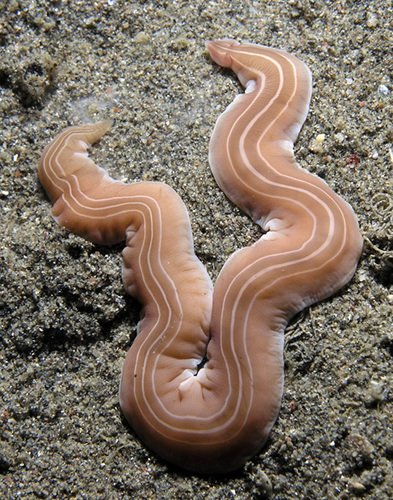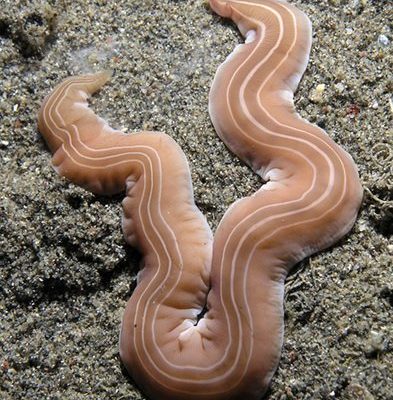
Imagine if you had a friend who could stretch and mold themselves into almost any shape. That’s kind of like what ribbon worms can do. They’re known for their long, flat bodies that can reach impressive lengths. Understanding how ribbon worms are classified involves diving into their physical traits and behaviors, as well as their evolutionary relationships with other organisms. So, grab your coffee, and let’s explore the captivating world of ribbon worms!
What Are Ribbon Worms?
Before we get into the specifics of classification, let’s unpack what ribbon worms are. Often referred to as **Nemerteans**, these creatures are primarily marine animals, though some can be found in freshwater and terrestrial environments. Ribbon worms have a body that is soft and often brightly colored, resembling a long ribbon or tape, which is how they got their name.
These guys have unique features that make them stand out. For one, they possess a proboscis—a sort of elongated mouthpart that they can extend to catch prey. This ability is pretty impressive and allows them to hunt and eat small animals like crustaceans and annelids. It’s like having built-in fishing gear!
So, what’s the big deal about classifying ribbon worms? Well, classification helps scientists understand their evolutionary history and their relationship with other life forms. You might be wondering why all this matters. Understanding these relationships can tell us a lot about the ecosystem and how different species interact within it.
The Phylum Nemertea
Now, let’s dive deeper into the **phylum Nemertea**. This taxonomy group is where ribbon worms belong, and it’s essential to know its key characteristics. Generally, members of Nemertea are known for their elongated bodies and distinct anatomy, but there’s so much more to it.
**Nemerteans** vary greatly in size and color. They can be as small as a few millimeters or as long as 30 meters! That’s longer than a school bus. Most of them inhabit marine environments, living under rocks, in the sand, or floating in the water column. Understanding this diversity is crucial when classifying them.
In terms of anatomy, ribbon worms are bilaterally symmetrical, meaning their left and right sides are mirror images. They have a simple digestive system, which is a refreshing change from some of the more complicated organisms in the animal kingdom. Classification within Nemertea is based on body structure, reproductive methods, and habitat preferences, which can help scientists identify different species.
Classifying Ribbon Worms: Key Groups
Within the phylum Nemertea, ribbon worms are classified into several classes based on specific criteria. The three primary classes are **Anopla, Enoplida**, and **Heteronemertea**. Let’s break these down a bit.
- Anopla: These species typically possess a simple proboscis and lack a distinct head. They are often found in shallow marine environments and are known for their vivid colors.
- Enoplida: Enoplida is a diverse group, often with more complex structures in their proboscis and a well-defined head region. They tend to be burrowers, making their living in sandy or muddy substrates.
- Heteronemertea: This class is unique because it includes species that have a more sophisticated anatomy and are often larger than the other classes. You can find them in various environments, from deep-sea to coastal waters.
Understanding these classes is crucial for researchers because it helps them determine how different ribbon worms adapt to their environments. Each class exhibits distinct behaviors and adaptations that allow them to thrive, showcasing the beauty of biodiversity within the Nemertea.
Physical Features That Aid Classification
When it comes to classifying ribbon worms, their physical features are fundamental. Each characteristic plays a vital role in determining their class and species. Here are a few key features to consider:
1. **Body Shape:** Ribbon worms, as their name suggests, have long, flat bodies. The shape can vary between species, aiding in their classification. Some may be more slender, while others are broader and flatter.
2. **Proboscis Structure:** The structure and type of proboscis can greatly vary. Some species may have a simple proboscis, while others possess complex structures with spines or hooks used for capturing prey. Think of it as having different tools in your toolbox—each one helps accomplish a different task effectively.
3. **Coloration and Patterns:** The colors and patterns of ribbon worms can be quite striking, and they often serve as camouflage in their natural habitats. Bright colors might indicate toxicity, while duller tones help them blend into sandy or rocky substrates. When classifying these worms, scientists often rely on visual cues to identify species.
By examining these physical traits, scientists can confidently classify ribbon worms into their respective categories, helping to paint a clearer picture of the rich tapestry of life within the phylum Nemertea.
Habitat Influence on Classification
Habitat plays a significant role in how ribbon worms are classified. Different species have adapted to specific environments, and this can directly influence their physical and behavioral traits. There are three main habitats to consider: marine, freshwater, and terrestrial.
1. **Marine Environments:** Most ribbon worms are found in marine settings, where they thrive in various depths and conditions. Marine species often have adaptations that allow them to navigate currents and find food in complex underwater landscapes. Those found in deep waters might exhibit features different from those living in shallow tide pools.
2. **Freshwater Habitats:** Some ribbon worms have managed to adapt to freshwater environments, which often poses challenges like different food sources and water chemistry. Their classification can depend on their ability to cope with these unique conditions.
3. **Terrestrial Settings:** Believe it or not, there are ribbon worms that live on land! These species often have characteristics that help them retain moisture and navigate the soil. Their classification can be tricky, as they share features with both aquatic and terrestrial forms.
It’s fascinating how these habitats shape the characteristics of ribbon worms. Studying their environments provides insight into their classification and the evolutionary pressures that led to their development.
So, there you have it! Ribbon worms are a captivating group of creatures within the phylum Nemertea, offering us a window into the diversity of life underwater. By examining their classification, we gain valuable insights into their physical features, habits, and habitats.
Understanding how ribbon worms are classified isn’t just a matter of curiosity; it helps us appreciate the intricate web of life on our planet. Each species plays a role in its ecosystem, from the smallest patch of sand to the deep ocean. By studying and classifying these unique organisms, scientists continue to uncover the mysteries of nature.
The next time you hear about ribbon worms, you’ll appreciate not only their unique traits but also the importance of their classification in the grand tapestry of life. Whether you’re a biology buff or just someone who enjoys learning about the natural world, studying ribbon worms can be a truly rewarding experience.

